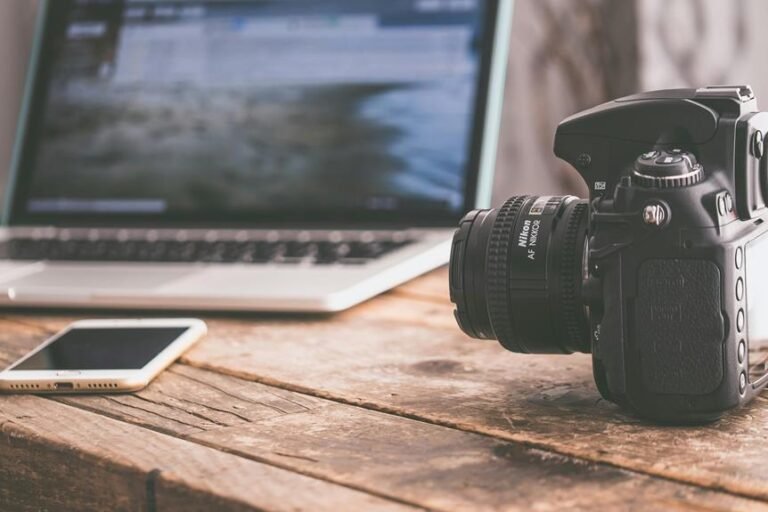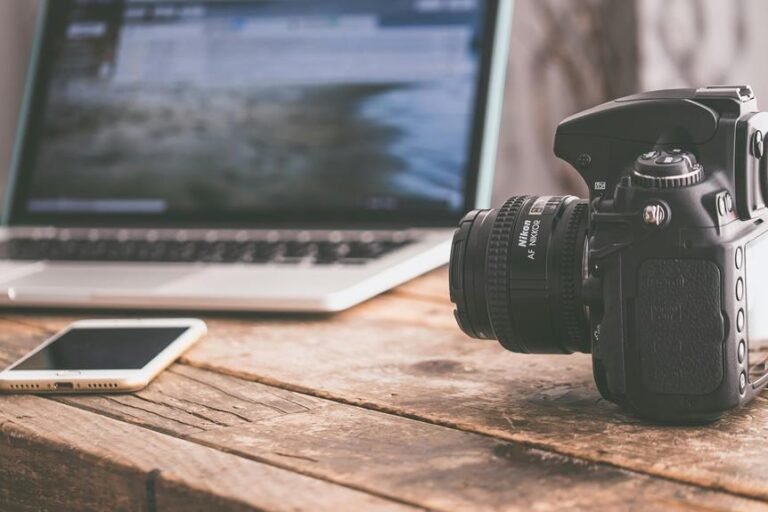Mac Camera Not Working? Troubleshooting Guide
If your Mac camera isn't working, start by checking camera permissions. Visit System Preferences, Security & Privacy, then Privacy to make sure apps have permission. Restart your Mac to refresh settings. Be sure to save work before restarting. Update MacOS regularly for smooth camera function and fixes. Reset the SMC by shutting down, inspecting hardware, and power cycling. Try resetting the NVRAM by pressing Option + Command + P + R keys when restarting. Check for software updates and test the camera in Safe Mode. If issues persist, contact Apple Support. Further troubleshooting steps await to help fix the problem.
A Quick Overview
- Ensure camera permissions are allowed in System Preferences for relevant apps.
- Perform a restart on your Mac to refresh system preferences and resolve minor issues.
- Regularly update MacOS to address hardware troubleshooting related to the camera.
- Reset the SMC if camera problems persist despite other troubleshooting steps.
- Reset the NVRAM for further hardware troubleshooting if camera issues continue.
Checking Camera Permissions
To guarantee your Mac camera functions properly, start by checking its permissions. Common issues with Mac cameras often stem from permission settings.
Troubleshooting tips include going to System Preferences, selecting Security & Privacy, and then Privacy. From there, choose Camera and make sure the relevant applications have permission to access the camera.
Restarting Your Mac
If experiencing persistent camera issues on your Mac, a simple yet effective troubleshooting step is restarting the system. Sometimes, glitches can be resolved by giving your Mac a fresh start.
Before initiating a restart, make sure you've saved any important work. To restart, click on the Apple logo in the top left corner, then select 'Restart.' This action can help refresh system preferences and clear any minor issues caused by software conflicts.
Updating Macos
Updating your MacOS is essential for ensuring your Mac's camera functions smoothly and efficiently. Regular updates often include important fixes for hardware troubleshooting, ensuring your camera operates at its best.
Additionally, updating MacOS can address any third party software implications that might interfere with your camera's performance. By keeping your system up to date, you can help prevent potential camera issues and maintain seamless functionality.
Resetting the SMC
When experiencing persistent camera issues on your Mac despite updating MacOS, consider resetting the SMC to potentially resolve the issue. Start by shutting down your Mac.
Perform a hardware inspection, ensuring all cables are securely connected. Power cycle your Mac by unplugging it, waiting 15 seconds, then plugging it back in.
If the problem persists, check for camera firmware updates. Also, try using an external monitor to see if the camera functions there.
Resetting the NVRAM
To reset the NVRAM on your Mac, follow these steps:
- Shut down your Mac.
- Turn on your Mac and immediately press and hold Option + Command + P + R keys.
- Hold the keys for about 20 seconds until your Mac restarts.
- Release the keys and let your Mac boot up normally.
- Check if the camera issue is resolved, as this can help with hardware troubleshooting and system diagnostics.
Checking for Software Updates
Check that your Mac is up to date by looking for the latest software updates available. Keeping your system updated guarantees compatibility with camera hardware and meets system requirements for peak performance.
To check for updates, go to the Apple menu, select 'System Preferences,' and then click on 'Software Update.' Install any available updates to make sure your Mac is running the latest software versions that support the camera functionality.
Testing the Camera in Safe Mode
If you're still experiencing camera issues after checking for software updates, the next step is testing the camera in Safe Mode. In Safe Mode, your Mac runs a basic system configuration, helping identify software-related problems.
To test the camera in Safe Mode, follow these steps:
- Restart your Mac in Safe Mode.
- Open an app that uses the camera.
- Check if the camera works without issues.
- Test different camera functions.
- Note any abnormalities that may indicate camera hardware issues.
Contacting Apple Support
When facing persistent camera issues on your Mac, the next course of action would be to reach out to Apple Support for further assistance.
After trying all troubleshooting steps, contacting Apple Support is essential for specialized technical support assistance. They can guide you through advanced solutions tailored to your Mac model, ensuring a thorough investigation and resolution of any underlying camera problems you may be experiencing.
Frequently Asked Questions
How Do I Clean the Camera Lens on My Mac?
To clean the camera lens on your Mac, start by gently wiping it with a microfiber cloth. Avoid using harsh chemicals or rough materials. If the problem continues, follow troubleshooting steps to make sure software or hardware isn't causing the issue.
Can Third-Party Apps Affect the Camera Functionality?
Yes, third-party apps can disrupt your Mac's camera settings. Make sure your system updates are current to fix any compatibility issues. Check app permissions and consider uninstalling suspicious apps. This process can help restore camera functionality.
Is There a Way to Disable the Camera Temporarily?
To temporarily disable your Mac camera due to privacy concerns, go to System Preferences, select Security & Privacy, click on Privacy, choose Camera, then uncheck the apps you want to restrict camera access to.
What Should I Do if the Camera Quality Is Poor?
To enhance camera quality on your Mac, begin by adjusting lighting and camera settings. Make sure you have the latest software updates and check your hardware. These steps can improve your camera's performance and help you achieve better image quality.
Are There Any Known Issues With Specific Mac Models and Cameras?
When it comes to specific Mac models and cameras, there can be compatibility concerns and hardware limitations. Certain models may not support advanced camera features or may have issues with certain camera applications.







